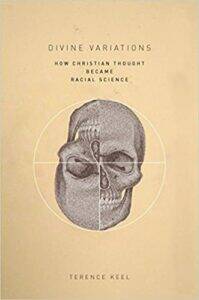In her book Playing in the Dark: Whiteness and the Literary Imagination, Toni Morrison notes that “regardless of the author, the readers of virtually all American fiction have been positioned as white.”
She then raises a question: “What does positing one’s writerly self, in the wholly racialized society that is the United States, as unraced and all others as raced entail?”Toni Morrison, Playing in the Dark: Whiteness and the Literary Imagination (New York: Vintage Books/Random House, 1993), xii. For Morrison, the “unracing” of white people and the “racing” of all others indicate a pattern of a racially ordered and stratified system familiar to all inhabitants of the United States of America. If we consider the wider framework of today’s world, we see the existence of racialization in numerous societies. Racialization is a global reality. As Michelle Christian suggests, contemporary “racialized social systems” must be understood as “globally connected” and “locally realized.”Michelle Christian, “A Global Critical Race and Racism Framework: Racial Entanglements and Deep and Malleable Whiteness,” Sociology of Race and Ethnicity Vol. 5, 2 (2019): 169–85. How did “global racialization” happen? What does this have to do with Keel’s Divine Variations?
Terence Keel’s Divine Variations interrogates aspects of the history of race and religion, with particular attention to Christian thought. As the subtitle, “How Christian Thought Became Racial Science,” suggests, the book probes the connection between religion (in this case Christianity), racialization, racism, and science. Keel views “the race concept in science” as “the brainchild of scientific and religious ways of knowing,” “a mongrel epistemology” (p. 16). He contends that in matters pertaining to the human condition, “Euro-American scientists have inherited a continuous story about human origins that stems from Christian intellectual history” and that “this parochial history is in large part why modern racial science is a ‘European way of looking at the world’” (p. 17). Keel states that his “book . . . provincializes the scientific study of human variation” (p. 6). The claims that “racial science” is rooted in “parochial history” and that this science is based on “a mongrel epistemology” are helpful, significant, and thought-provoking. They merit further elaboration, clarification, and nuance. In what follows, I extend the conversation on these claims by suggesting more emphasis on the “parochial” or “provincial” nature of current racial science and more nuance and complexity in the intellectual roots of racialization.
Current Racialization: “Science” or “European Provincial Racial Thought” Globalized?
I agree with Keel that “we can never know in its entirety the complete intellectual heritage found within racial science” (p. 16). His idea that Europeans contributed much of that intellectual heritage is also convincing. One must, however, keep in mind that racialization occurred in the intellectual histories and practices of other societies. For example, Yasuko Takezawa takes issue with the view that presents “race and racialization” as “modern Western constructions” by arguing that “the racialization of [the Kawaramono or Burakumin] had already begun in [Japan] before European encounters with Others in different continents.”Yasuko Takezawa, “Racialization and Discourses of ‘Privileges’ in the Middle Ages: Jews, ‘Gypsies’ and Kawaramono,” Ethnic and Racial Studies 43.16 (2020): 193. Takezawa thus provides a broader historical and global context for evaluating the notion that race was “invented” in the European Middle Ages, a notion present in works such as Geraldine Heng’s The Invention of Race in European Middle Ages (2018) and M. Lindsay Kaplan’s Figuring Racism in Medieval Christianity (2019).The history of race and racialization should also pay careful attention to “Classical Antiquity.” See The Invention of Racism in Classical Antiquity (2004) by Benjamin Isaac and The Origins of Racism in the West (2009), edited by Miriam Eliav-Feldon, Benjamin Isaac, and Joseph Ziegler. I am aware that this is not “news” to Keel (as indicated in his interaction with Buell, pp. 7–8 and the bibliographic entry on p. 173), but is beyond his concerns in this book. I mention this for the sake of readers who may experience some anxiety about “Western/European or Christian bashing.” Nevertheless, the European imprint on racialization is undeniable.See Yasuko Takezawa, “Problems with the Terms ‘Caucasoid,’ ‘Mongoloid’ and ‘Negroid,’” Zinbun 43 (2012): 61-68. Takezawa examines the use of these terms in Japanese society and textbooks.
The history of European provincial racial thought is long and complex. One cannot expect a full account of this history by one author and in a book the size of Divine Variations. One’s account is always framed by choices made about people, periods, and places. Keel expresses his choices clearly by limiting his investigation to “four historical moments” and by stating that his purpose is to “trace the formation of racial science out of Germany in the eighteenth century, follow its transformation among nineteenth-century American ethnologists, move through the biomedical theories of the Progressive Era, and finally arrive at present-day genetic research on the Neanderthal genome” (p. 6). Keel’s “Germano-American” account sharpens the provincial and parochial aspects of racial science. How does this “Germano-American” science relate to European and Christian thinking about humans?
“Germano-American” racial science must be understood in the broader context of the history of European perceptions of hierarchy in humans. The title of Keel’s fourth chapter, “Noah’s Mongrel Children: Ancient DNA and the Persistence of Christian Forms in Modern Biology,” alludes to that history, without much elaboration. Given the significance of “The curse of Ham” or “Noah’s curse” for Christian thinking about racialization (see p. 20), Keel could have given more attention to it, especially in light of some of the works published in this century, such as David M. Goldenberg’s The Curse of Ham: Race and Slavery in Early Judaism, Christianity and Islam (2003), Stephen R. Haynes’s Noah’s Curse: The Biblical Justification of American Slavery (2002) and David M. Whitford’s The Curse of Ham in the Early Modern Era: The Bible and the Justifications for Slavery (2009).
In this chapter, Keel writes “that turn-of-the-century anthropologists and prehistoric archeologists constructed a linear model of human cultural development . . . through a predetermined hierarchy of stages, with Europeans at the top of the evolutionary chain” (pp. 123–24). The idea of a hierarchy “with Europeans at the top” predates “turn-of-the-century anthropologists and prehistoric The history of European provincial racial thought is long and complex. archeologists.” Readers familiar with the works of eighteenth-century European philosophers David Hume, Immanuel Kant, and George Wilhelm Friedrich Hegel know their racial thought. Naomi Zack notes that these “three of philosophy’s most revered canonical figures . . . forged foundational ideas about the existence of human races and their differences. They all assumed that human races exist and that they form a normative hierarchy, with whites, as the best, at the top.”Naomi Zack, “Introduction” in The Oxford Handbook of Philosophy and Race, edited by Naomi Zack (New York: Oxford University Press, 2017), 2.
David Hume (1711–1776) expresses his view of racial hierarchy in a footnote to his essay “Of National Characters.” Here are a few lines of this footnote: “I am apt to suspect the negroes, and in general all other species of man (for there are four or five different kinds) to be naturally inferior to the whites. There never was a civilized nation of any complexion than white, nor even any individual eminent either in action or speculation […] In JAMAICA indeed they talk of one negroe as a man of parts and learning; but ’tis likely he is admired for very slender accomplishments, like a parrot, who speaks a few words plainly.”David Hume, Essays, Moral, Political, and Literary, edited, with Preliminary Dissertations and Notes by T. H. Green and T. H. Grose, Vol. I (London, 1882), 252. John Immerwahr notes that “Hume’s racism was deliberate and considered,” especially in its “attack on blacks.”John Immerwahr, “Hume’s Revised Racism,” Journal of the History of Ideas Vol. 53, No. 3 (July-September 1992):485–86. On April 24, 1684, Le Journal des sçavans published an article entitled “Nouvelle Division de la Terre par les differentes Especes ou Races d’hommes qui l’habitent” (in English “New Division of the Earth according to the Different Species or Races of Men that Inhabit it”) by François Bernier (1625–1688), a French doctor and traveler. The “new division” proposed by Bernier has elements of “racial ordering and stratification.” According to Siep Stuurman, this article “can be situated at the ‘beginning’ of the long and complex intellectual trajectory of modern racial thought.”Siep Stuurman, “François Bernier and the Invention of Racial Classification,” History Workshop Journal Issue 50 (2000): 2. See also Pierre H. Boulle, “François Bernier and the Origins of the Modern Concept of Race” in The Color of Liberty: Histories of Race in France, edited by Sue Peabody and Tyler Stovall (Durham and London: Duke University Press, 2003), 11–27. The “intellectual trajectory of racial thought” in Europe, from the seventeenth century to the present, and now globalized, agrees with Keel’s assertion that “scientific perceptions of race are neither value-free nor detached from the inherited traditions of belief and reason that constitute the scientific subject” (p. 142).
Revisiting and Nuancing the “Inherited Traditions of Belief and Reason”
Keel states that the “progressive arrangement of human development was an extension of the Christian view that life progresses toward higher forms of truth” (p. 124). This statement is consistent with Keel’s thesis in the book: “habits of mind and reasoning practices inherited from Christian intellectual history have predisposed us to conceptualize human origins and development in racial terms” (p. 145), an idea expressed in various ways throughout the work. However, Keel does not provide a full description of what he means by “Christian,” “Christian thought,” or “Christian worldview.” The particular configuration of Christianity produced in Europe and by Europeans seems to be what Keel has in mind. While “Christianity . . . provided Europe with much of its subsequent sense of both internal cohesion and its relationship with the rest of the world,”Anthony Pagden, “Europe: Conceptualizing a Continent” in The Idea of Europe: From Antiquity to the European Union, edited by Anthony Pagden (Washington, DC: Woodrow Wilson Center and Cambridge: Cambridge University Press, 2002), 35. one must remember configurations of Christianity in places such as Egypt, Ethiopia, India, and Russia. How did the Christian intellectual history of these places contribute to racial science? This is an important question especially in our day of increased awareness of the global nature of Christianity, but it is beyond the scope of Keel’s Divine Variations. This book helps readers examine issues of the relationship between contemporary racial science and aspects of Christian thought.








Comments
Be the first one to make a comment!